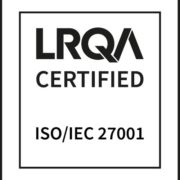Step 1: Defining Clear Goals and objectives.
10 Steps to successful CRM implementation
To get the most out of your CRM implementation, it’s crucial to clearly understand what you want to achieve with the system and how it aligns with your overall business strategy. This begins with defining clear goals and objectives.
For example, if you’re a car dealership and you’re experiencing a high turnover rate among your customers, which is negatively affecting your bottom line, a goal for the dealership could be to increase customer retention by 20% within the first year of CRM implementation. This Specific goal is Measurable, Achievable, and Time-bound, which makes it a SMART goal.
Another important step in defining your goals and objectives is to consider the specific metrics that you will use to measure success. These metrics should be directly tied to your overall business goals and should be easy to track and measure. For example, if your goal is to increase customer retention, you could track data such as customer retention rate, customer lifetime value, and customer satisfaction. These measurements will help you in tracking the progress of your CRM implementation and make necessary changes if required.
Once you have defined your goals and objectives, create a detailed plan for how you will achieve them. This plan should include specific actions, timelines, and resources required to reach your goals. Involve all relevant stakeholders in the planning process, as this will ensure that everyone agrees and committed to the success of the project. This includes employees, management, and even customers, if possible. Getting input from different stakeholders will help in understanding their perspective and make the CRM implementation more effective.
Communication: Make sure your employees and other stakeholders are aware of the goals and objectives, and understand how they will be affected by the CRM rollout. This will help ensure that everyone agrees and is committed to success. Clear communication also removes any confusion or misunderstandings that can arise during the implementation process.
Setting clear goals and objectives is a critical first step in successfully implementing a CRM system. By identifying the specific challenges or pain points that your business is facing, defining metrics to track success, creating a detailed plan, and involving all relevant stakeholders, you can ensure that your project is aligned with your overall business strategy and will set your business up for success.
It is important to remember that the CRM implementation is a process and not a onetime event. Regular monitoring and review of the goals and objectives will help in achieving the desired results.



